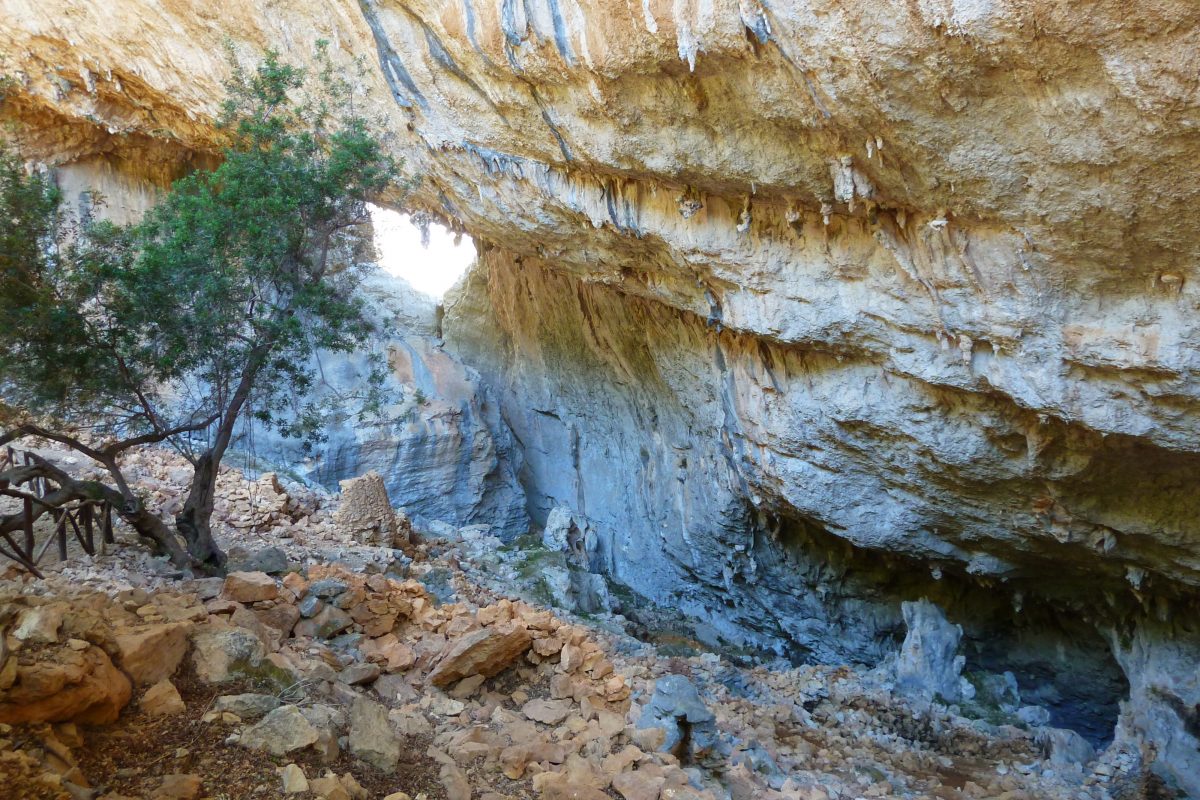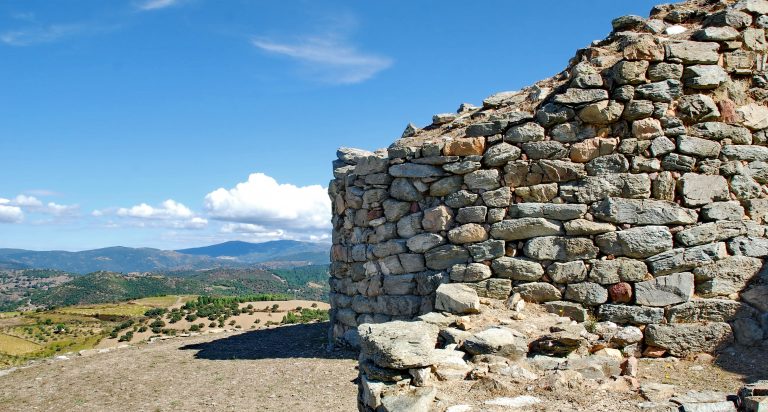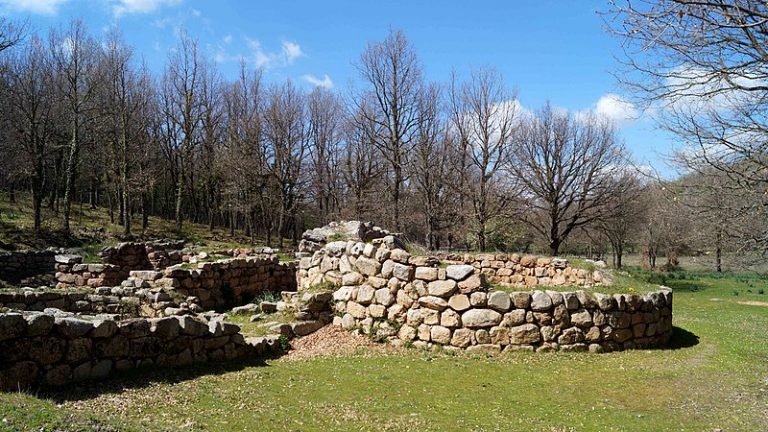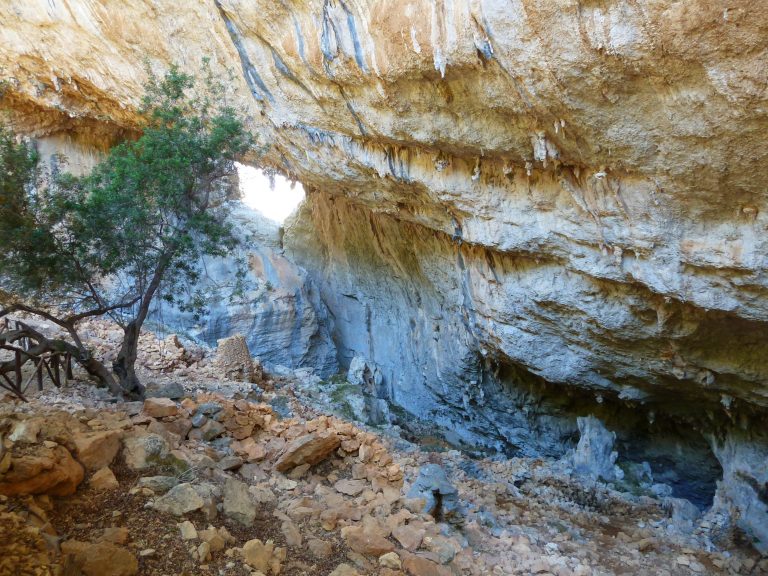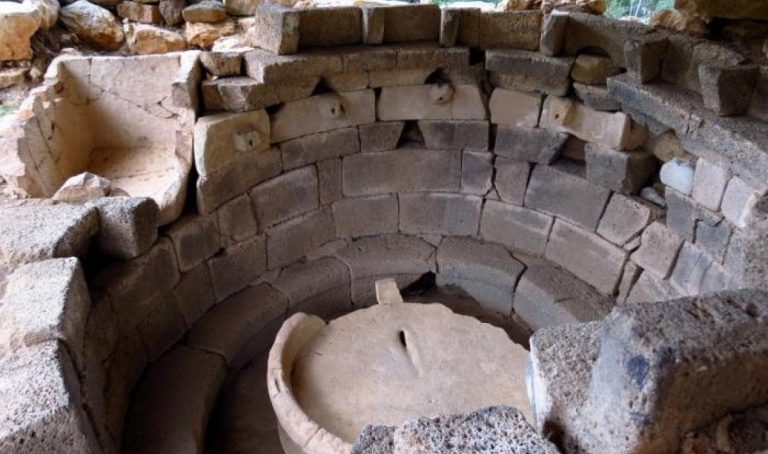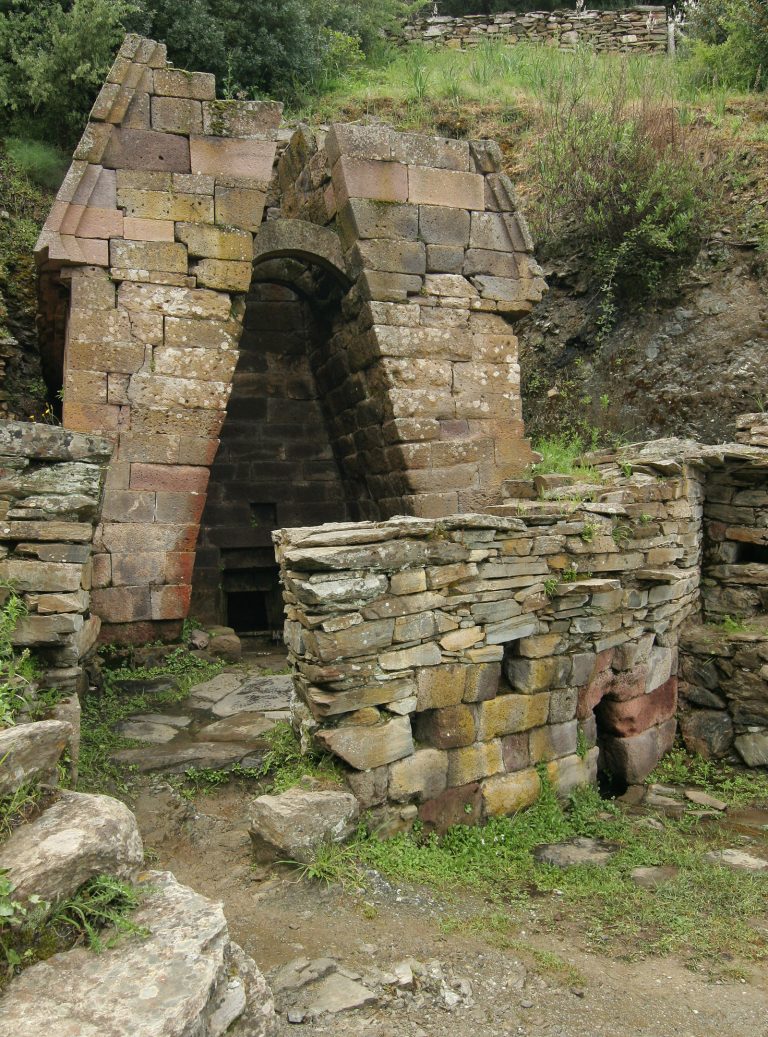Probably you have already heard about Barbagia. Perhaps you have been told this is where Sardinia becomes harsh and real. That might have sound as a common saying, that is just because you haven’t visited it yet. There are many Barbagias in the island because this is the heart of Sardinia, its inland, its centre far away from the sea. It is here that charming villages whose origins are lost in time spring up, among harsh ranges and majestic nature. Nuragic Sardinian inhabitants footprints are hidden among dense cork oak woods, nestled into the rocks, on the top of granite plateaus. If you need support to customize your archaeological tour drop us an email. Meanwhile, you might find useful to read these suggestions written for those archaeology lovers, hiking and trekking enthusiasts who want to visit Sardinia offseason.
Silanus, Santa Sabina Complex
Our journey starts in Marghine in the centre west of Sardinia, just a bunch of miles from the town of Macomer. The village of Silanus is home to a truly unique archaeological site: in the middle of the plateau a nuraghe and a Byzantine church dating back to the 11 th century show up. It’s the Complex of Santa Sabina which includes also a nuragic village, a sacred well and a giants’ tomb. The presence of the church devoted to Santa Sabina, which is still a renowned attraction for folks devotion witnesses the persistence of the sacred nature of this place which remains unaltered after thousands of years.
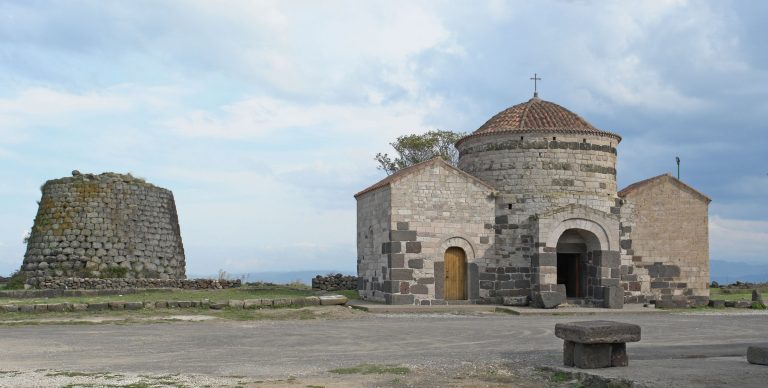
Teti, the Abini Village-Santuary
The Abini village sanctuary in the municipality of Teti, in the area also known as Barbagia di Ollolai, is one of the most famous in Sardinia. It is here that some of the most remarkable findings of the nuragic age have been found such as the small statues in bronze known as bronzetti sardi and other daily tools of priceless value. They tell us how the nuragic people were skilled in the use of metals. Next to the votive swords and daggers, this incredible site has revealed the famous statues reproducing archers, worships, tenderer and warriors with shields. An extraordinary glance on the daily life of the most mysterious Mediterranean civilization.
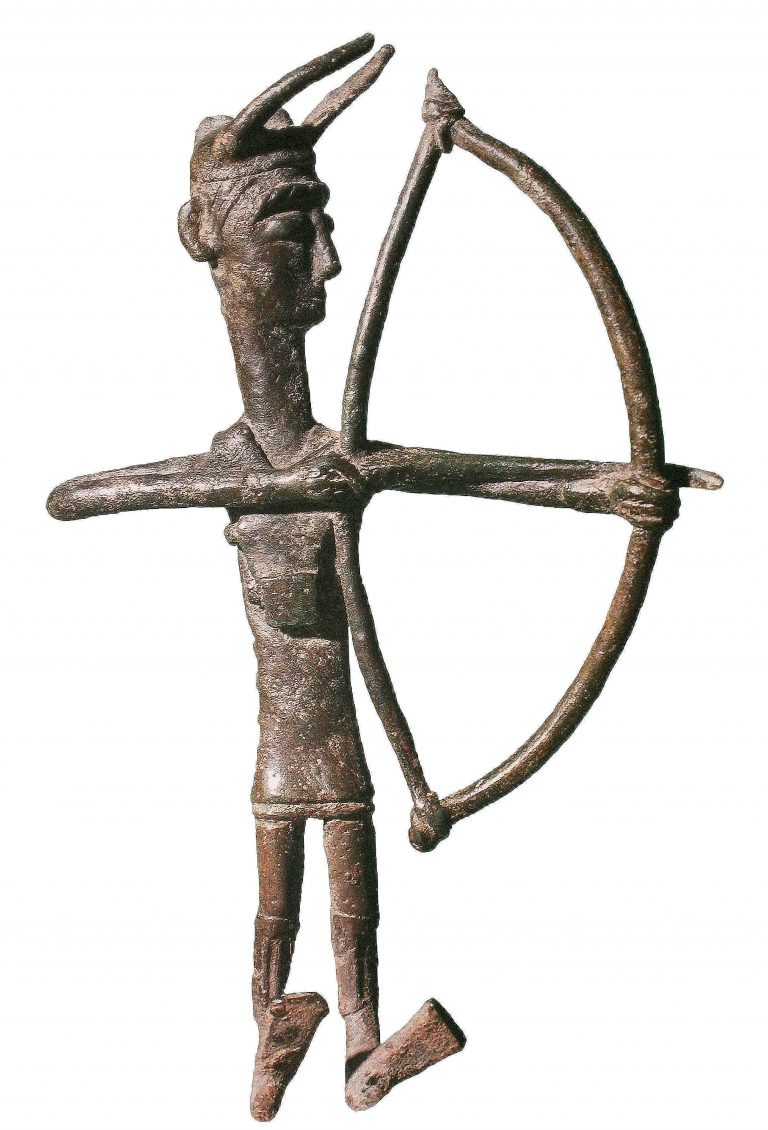
Meana Sardo, the stunning Nuraghe Nolza
Nuraghe Nolza is less famous than Su Nuraxi, enrolled in UNESCO world heritage list although its location is truly enviable. From the top of a schisted plateau, this nuraghe dominates an hearthbreaking landscape overlooking the Barbagia di Belvì. Few ruins of its nuragic village are left. The Nuraghe is of particular interest for the presence of 4 towers and a terrace holding what remains of a fireplace. From here on out the rolling landscape of Meana Sardo, bordering the Barbagia di Belvì and the Mandrolisai regions becomes dotted with wineyards. An off the beaten track destination extremely interesting for wine lovers.
Fonni, the archaeological Park of Madau- Gremanu
The only aqueduct dating back to nuragic period is in the area of Fonni, the highest city of Sardinia on the slopes of Gennargentu mountain. In Gremanu it is possible to admire a complex of sources next to a workshop for sacred offers exhibition. For archaeologists this is a never seen place of worship type. The site is surrounded by a wood of and several water springs. Nearby you can visit the monumental prenuragic necropolys of Madau made up by 4 tombs with protome taurina.
Oliena, Tiscali nuragic village
Tiscali nuragic village is the symbol of that mysterious aurea belonging to Barbagia folks and the nuragic civilization from the night of times. Bordering the 2 Supramontes of Oliena and Dorgali, Tiscali remains invisible to the eye of the visitor until he enters the cavity. In fact the village has been built within the walls of the sinkhole. Inside an enchanted wood of holm oaks and lentisco, perhaps the last witness of the extreme attempt of nuragic folks to defend themselves from external attacks finding shelter in such a secret impenetrable village.
Oliena and the sacred well of Sa Sedda ‘e Sos Carros
Once again in the Supramonte of Oliena, the mountain with its marvellous Lanaitto valley, a true paradise for trekking lovers. The valley extends from the famous karstic wells Su Gologone until the 2 caves of Sa Oche and su Bentu (the voice and the wind). Inside the village there is an hut which is different from the others; it is a well whose walls are sculpted with mouflon head with a hole through which the water flew. This nuragic well is connected to the cult of waters and is a great example of the engineering and architectonical refinement of which the nuragic folks were capable.
Orune, Su Tempiesu sacred well
It was a landslide at the end of nuragic era to protect for thousands of years the sacred well of Su Tempiesu. It’s only thanks to this chance if today we have a better clear idea of the building techniques used by the nuragic artisans for the vault of their temples. In a wide heritage of uncovered sites Su Tempiesu is the only one in the island which has preserved the original cover almost unaltered. A miracle which attracts scholars and enthusiasts from all Europe. The sacred well, a few kilometres from Orune city centre can be reached with a pleasant walk of remarkable botanic interest. On its back the limestone slopes of Lula Mountain Montalbo can be admired.
Bitti and the Sanctuary of Romanzesu
The district nuragic sanctuary of Romanzesu in Bitti, is settled in the Buddusò plateau surrounded bi a lush cork oak wood of unpaired beauty. This site is a unicum for several reasons. First of all, at least 3 different types of temples and worship places can be found. They are related also but not exclusively to the cult of waters. An Heroon, a megaron temple wall in probably sacred as the mausoleum of a local hero homaged with Precious amber jewels coming from the Baltic Sea. A second one of a kind place of worship is the labyrinth where the shaman could arrive to the Sancta Sanctorum just following a forced path. The last is the most monumental of the site, a gorgeous terraced amphitheatre surrounding the ceremonial basin used for the ablutions in the sacred well. Furthermore, some unique huts with an oval shape are found here.

Dorgali and Serra Orrios Nuragic Village
A small town from the Bronze age. That’s how scholars describe the nuragic village of Serra Orrios close to Dorgali with its 49 round huts and shelters for animals and stocks, two little temples of type megaron and two giants’ tombs. Exactly as a village of nowadays, this is a place where people lived, died and prayed. The most ancient findings date back to the XVI century B.C and the site has been frequented for at least 1000 years. Among the many findings there are some remarkable models of moulds used to sign the handcraft products such as the bread. Moreover the site has revealed some bracelets made with minerals from the nearby mines of Sos Enattos in Lula.
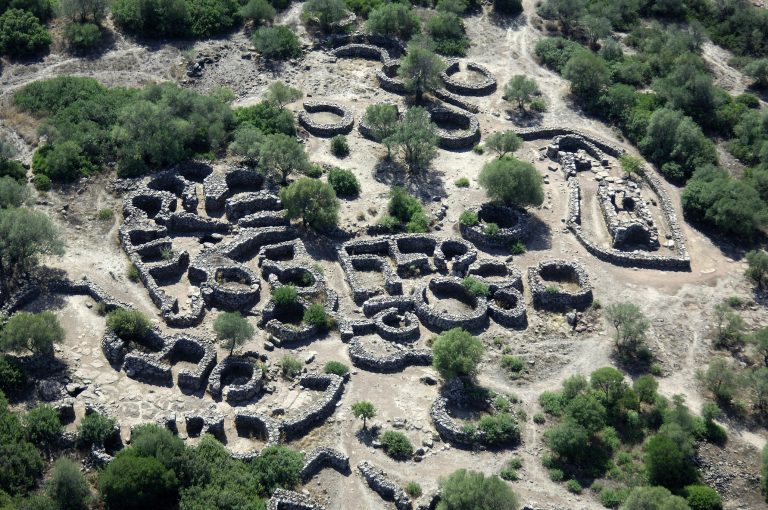
Dorgali, S’Ena e Thomes Giants’ Tomb
On the road which goes from the road SS 131 DCN up to Dorgali, amid a greenery plane stands out this megalithic complex among the most well preserved of the island. The Giants’ tomb which is named after the area Sa Ena e Thomes shows up with its astonishing 4 metres high granite stele after a lovely walk in the green valley. This is the prenuragic funerary monument most remarkable of the island made 4000 years ago to host the collective burials of the local community. Its cyclops walls had fueled legends in the past related to the builders which had been imagined as Giants Today it is clear that their size was functional to the needs of the locals. However the charm and mysterious aura that will bring you straight to the Mediterranean mankind history roots is timeless.
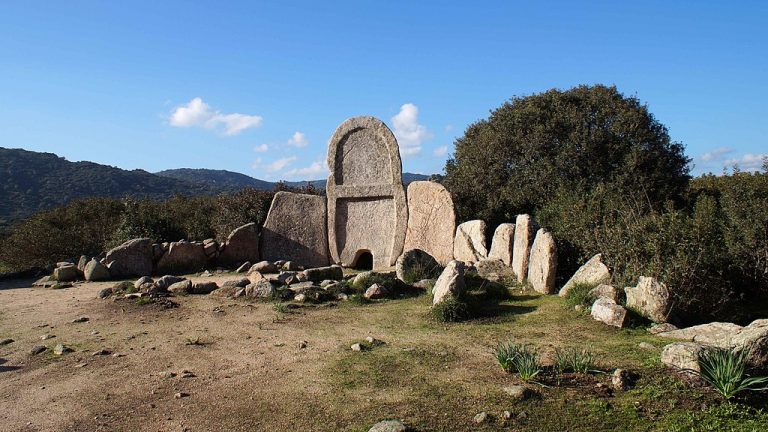
Archaeology lovers: some great tips on where to sleep close to Nuoro
To spend some days in Nuoro, is definitely a good idea for a great start of your archaeology tour from the main city of the area particularly if you want to proceed towards Silanus, Fonni and Orune. To start feeling the wild energy of the nature of Barbagia it is ideal to sleep in Oliena or find an accommodation in Dorgali both for visiting the many sites of interests of the 2 cities but also the ones in Orune and Bitti. Slightly far from Nuoro the archaeological sites of Teti and Meana. Choosing to stay in Orani and Gavoi allows you to stay close to Teti and close the line with an authentic tour of Barbagia whilst the visit to Meana can be associated with a tour to discover ant taste the good wines of the area called Mandrolisai and its sweet landscapes. Those landscapes differs so much from the ones of Barbagia although they are very close to each other.
 it
it de
de nl
nl en
en fr
fr
